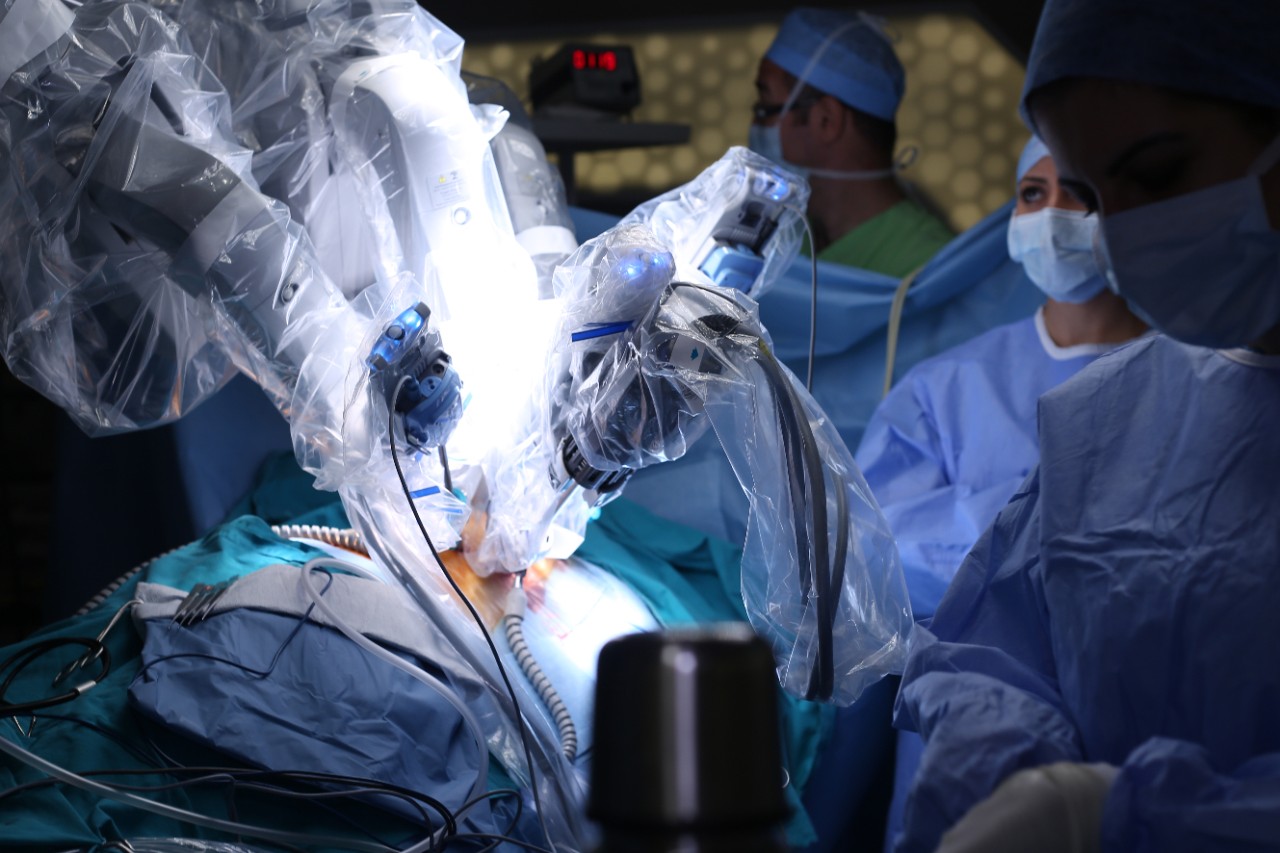How robotics is changing the way healthcare organisations are being managed
By Dr Anees Fareed, Chief Medical Information Officer, Al Jalila Children’s Specialty Hospital, Dubai Transformation Strategist, Cerner ITWorks
Ten years ago, when the leadership of a major healthcare institution where I was working decided to purchase a robot to look after some of the activities in its upcoming medical centre, many could not digest the idea easily and were not able to foresee how robotics would transform the way healthcare organisations are managed. It might not have made the right business sense at the time, but when you look at how robotics has evolved, what is now available, and where it is moving, the technology has advanced so far that it makes sense now to consider robotic technology for cost savings, waste reduction, improved patient care and to create efficiencies within healthcare organisations. This is why when I go to work at Al Jalila Children’s today, I can see its fully automated pharmacy using advanced robotic technology to dispense medication based on order instructions sent from its Cerner hospital information system.
Automation driven by digital healthcare technologies such as robotics and artificial intelligence, could heavily contribute to the long-term sustainability and profitability of healthcare systems. Robots play a great role in improving efficiency of the healthcare workforce by taking over tasks that are repetitive and monotonous but requiring constant attention to detail.
Implementing robots into an organisation’s business model provides preciseness of completing these tasks, helps reduce the workload of healthcare workers and gives them more time to spend with patients and focus on other important activities. Using robotics in healthcare can also help organisations better manage a shortage of healthcare professionals including physicians, nurses and allied health professionals; the ability to reduce the cost of care; and enabling enhanced forms of therapy and rehabilitation using technology. Healthcare robots are transforming healthcare across the globe, from surgery to rehabilitation, from radiation treatment to infection control, and from pharmacist to therapist. Some of the fields where robotics has already been used are mentioned below.
Surgical robots: One of the fastest growing field of robotics in healthcare is surgery. Surgical robots, like the da Vinci Surgical System, have been used in various types of surgeries ranging from head and neck to urology surgery. These robots have greater reach and flexibility and are capable of making more precise incisions to access a specific area. This gives physicians greater control over the procedure. There are robots that can offer more accurate bone cuts with minimised amount of ablated bone and soft tissue damage, which promotes faster healing. Though these robots provide greater accuracy, less damage and easy and faster access, they are not meant to completely replace surgeons. The surgeon is in full control of the system at all times. Robots are used to augment a professional’s skills, helping them improve efficiency and decrease their workload. Hair transplant is another area where robots can excel due to their precision and speed.
Pharmacy robots: The use of robotics in pharmacies has become increasingly popular in the region. Al Jalila Children’s Specialty Hospital, envisioned as one of the best paediatric specialty hospitals, recently opened to the public and has become the first hospital in Dubai to use robotics in its outpatient pharmacy. It is now working on automating its inpatient pharmacy workflows by taking advantage of pharmacy robotics.
Pharmacists are overloaded with many repetitive tasks from the time a drug has been prescribed until it is dispensed. These tasks have to be done meticulously and require high attention to detail to avoid medication errors. Robots can assist in reading information sent from hospital information systems and updating the dispensing status of prescribed drugs back to the system. A robotic arm can attain the appropriate vial or packet, collect the medication and label medication. In addition to scanning and using bar codes to verify medication, these robots can also package, store and dispense filled prescriptions.
Another area pharmacists can utilise robotics is in the preparation of intravenous (IV) solutions, where one or more medications are added to a diluent, like saline solution in an IV bag. The robotic arm works autonomously in a sealed, sterile compartment to prepare IV admixtures and delivers them in IV bags and syringes. The doctor or pharmacist enters the desired formulation in the electronic medical record (EMR). The pharmacist verifies and confirms the formulation, loads empty syringes or IV bags with diluent into loading areas of the robot and the robot performs all the processing to compound the medication based on instructions received from the EMR. This includes verifying that the proper medication has been selected, adding a specific amount of the medication to the IV bag, labelling the IV bag, and delivering the patient-ready IV bag to an output area of the machine. In addition, the robust data mining capabilities of robotic machines can equip pharmacies and healthcare organisations with valuable efficiency insights by measuring and reporting key performance indicators.
Robotics in rehabilitation medicine: Wearable robotic structures, such as exoskeletons, can help humans with a range of motion. Exoskeletons can be used for rehabilitation therapy procedures like gait training to help patients with paralysis walk again after a stroke, traumatic brain injury or spinal cord injury. Soft robotic gloves are another example of a wearable robot that is designed to help chronic neuromuscular or musculoskeletal disorder individuals who do not have the ability to hold objects. Robot-assisted rehabilitation therapies would help not only the patient recover faster but also help care providers by taking over heavy duty tasks like carrying an elderly patient during rehabilitation care. Rehabilitative robotic arms are available for victims of stroke and other neurological disorders, which help them perform rehabilitative exercises at the same time, and offer a 3-D video gaming experience. Patient-specific parameters like force used and range of motion are added benefits that help customise treatments based on individual progress that is fed back from these machines. Imagine how beneficial it would be when robots predict the likelihood of falls by measuring gait and pace length of patients using these robots.
Robotic telemedicine: The shortage of healthcare professionals, coupled with the unavailability of specialised care at remote places, are the main drivers for the usage of robots in telemedicine. Human-sized telerobots are designed to facilitate patient monitoring, communication and timely and specialised patient care remotely. Patients in remote areas or who are not able to travel will have access to high-quality emergency consultations for stroke, cardiovascular and burn services when they need them. Robots enable consultants to remotely log into robots, review patient investigation and examination data, communicate with the patient and other healthcare workers and provide consultations. These robots can even alert care provider teams based on the information read by the machine during patient examination.
Robotics in infection control: How about having a robot perform disinfection of any place within a healthcare facility? This is what is being offered by disinfection robots like the Xenex Robot. These robots can destroy deadly microorganisms using special UV disinfection techniques. The rate of hospital-acquired infections can be effectively reduced and managed using this technology. It is faster, more effective than conventional disinfection methods as it uses high intensity, high energy UV light to disinfect.
Mobile logistics robots: In a typical hospital setting, there are many items to be transported daily, including thousands of medication orders, meal orders, linens and pounds of trash. This causes healthcare workers to commute across the hospital several times. An autonomous mobile transport robot can be used for many of these tasks, helping to reduce wait times and staff workload. These robots can navigate freely across the hospital using sensors. There are even robots that are capable of carrying patients, which is highly beneficial for elderly patient care.
Other applications: Robotics have been applied to phlebotomy, where it can help collect blood specimens and label them accurately, which helps save time and reduce the workload of the nurses.
Another field in which robotics has tremendous opportunity is elderly care. Humanoid social robots designed for elderly care are capable of speaking, smiling and reminding the elderly about taking medications and following doctor’s instructions. As technology advances, we could expect more features that would help in everyday activities like fitness coaching.
Dentistry is another area where robotic technology has saved time in the process of making crowns by reducing the length of the procedure. It also has potential applications for tooth extraction.
Nanobots are another future technology. They are tiny robots designed to swim through the bloodstream across the “blood brain barrier” and reach the target site. Nanobots could be used in treating complex diseases like cancer, Type 1 diabetes or infections.
The list never ends! Opportunities and potential for robotic applications are wide-ranging in healthcare and all of them are predicted to change the way health care organizations are being managed today. However, there are challenges as well for healthcare organisations in the adoption of robotic technologies.
Challenges
Even though the cost of popular and sophisticated robotic systems is trending downward, most of them require relatively higher capital investments that may cause healthcare organisations to overlook the long-term benefits and return on investment of robotic technologies and delay adoption.
Operations in healthcare organisations are complex and involve uncertainty. Robots are good for performing repetitive tasks but might not be equipped to handle complex and uncertain tasks that a human can solve far better than robots. However, advancements in artificial intelligence, along with predictive analytics, are uplifting robotic technology and making it capable of handling more tasks.
Some of these applications would require more space and redesigning existing infrastructure of hospital units or departments, which could be a cause for hesitation.
Some newer robots are still evolving. As is the case of any innovation, organisations may hesitate to be an early adopter and wait for technology to be proven before making a financial commitment.
Another major concern is machines replacing jobs and creating unemployment. The good news is many robotic technologies are being designed to complement human skill sets, reduce workload and enable professionals to focus on more important activities that have a greater impact on patient care delivery.
Conclusion
Healthcare organisations globally and regionally are adopting robotic technologies to manage their operations in a variety of fields, including surgery, pharmacy, rehabilitation, telemedicine and others. As technology advances faster, and costs continue to decline, more healthcare institutions are moving towards embracing technology in proven areas. Technology has the potential to replace repetitive tasks, complete tasks with more accuracy and speed, reduce workload, provide services remotely and reduce costs. It is worthwhile for healthcare leaders to look at the immense potential and long-term benefits of taking advantage of innovative, but maturing, robotic technologies and invest in them to help manage their organisations. As Gijs van Wulfen – a keynote speaker and an authority for innovation and thinking and design said, “Operational excellence generates your profits today. Innovation excellence will generate your profits tomorrow.”


